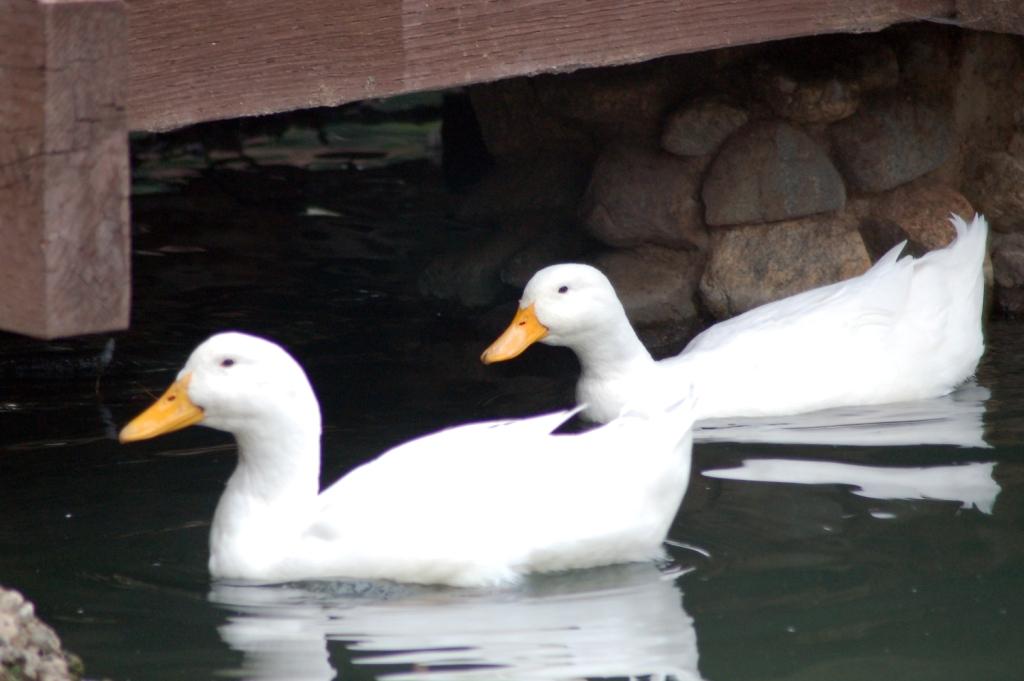Duckery Unit

Duck rearing is prevalent among weaker sections of rural population which provides them supplementary and steady income on daily basis besides providing them nutrition duck eggs for family consumption and engaging family labour in their leisure hours to look after Duck unit thus, generates rural employment.
Gujarat State has higher land under in land water ponds or water holes particularly in South Gujarat region and tribal communities keep duck for production of duck eggs and duck meal which are considered to be poorman’s poultry productions available at affordable prices.
Over 10 million duck population exists in the country and ranks 2nd in the world after Indonesia. Around 600 million duck eggs valued at Rs. 180 crore are being produced and are being consumed in the rural area, Kerala, West-Bengal, Orissa, Andhra Pradesh are the Staes where duck are predominant.
Ducks suppliment their feed by foraging. They eat fallen grains in harvested paddy fields, insects, shails, earth worms, small other fishes etc.
Duck rearing does not require elaborate housing like poultry. Ducks are more hardy well suited for weaker section where level of management is moderately scientific.
Marshy, riverside, wet land and barren moors are excellent areas for duck farming. Duck cum fish farming can be integrated.
Ducks lay 95% to 98% eggs in early morning before 9.00 am after which the flock can be taken for foraging to nearby ponds by the duck farmer or his family members.
Khaki Campbell is best egg producing breed in ducks. Animal Husbandry Department of Govt of Gujarat from their Duck breeding farms at Mandvi in Surat district can supply 3 months old duck lings at Rs. 130 per duck ling.
Performance parameters of Khaki Campbell ducks are given as under :
Particulars |
|
1)Age at first egg |
120 days (4 months) |
2)Age at 50% production |
146 days ( 5 months) |
3) Annual egg production |
300 eggs |
4) Body weight at 40 weak |
1.8 kg |
5)Daily feed consumption per |
120-130 gms |
6) Bird |
(which can be reduced to 50% under semi intensive forging conditions) |
7) Duck mortality |
|
i) 0-8 weeks |
2 to 3% |
ii)8-20 weeks |
0.2 to 0.5% |
iii)Adult mortality |
5 to 7% |
8)Other Techno - economic assumptions. |
Rs. 2.00 per egg |
i)Sale price of egg |
@ Rs. 30/- per kg |
ii) Sale price of Duck meat |
@ Rs. 2/- per duck 1st year bird per year. |
iii)Veterinary expenses |
@ Rs. 4/- per year during 2nd year onwards. |
iv)Feed price |
@ Rs. 7/- per kg |
v)Feed for 1st 6 months |
9 kg per bird |
vi) 6 months to 12 months |
12 kg per bird |
vii) 2nd year |
24 kg per bird |
viii) 3rd year onwards |
25 kg per bird |
9) Sale price of duck manure |
@ Rs. 10/- per bird |
Duck rearing unit of 100 Ducks + 15 Drakes maintained under
semi-intensive conditions (in Rupees)
1. Shed/enclosures for 100 + 15 duck for 500 sq. ft @ Rs. 20/- per square feet |
10,000 |
2. Duck feeding, watering and egg laying boxes, buckets etc lumpsum |
1,500 |
3.Duck lings 3 months old 115 + 15 i.e. 130 @ Rs. 130/- per duck including transport lost |
16,900 |
4.Feed cost for first 2 months during growing of one month and one month of initial laying period @ 1.5 kg + 2 kg = 3.5 kg per bird @ Rs. 7/- per kg |
3185 |
5.Cost of medicines and vaccination |
1500 |
6.Other misc cost including insurance cost etc. lump-sum |
675 |
Total cost |
33,760 |
Source: http://www.nabard.org/ |

